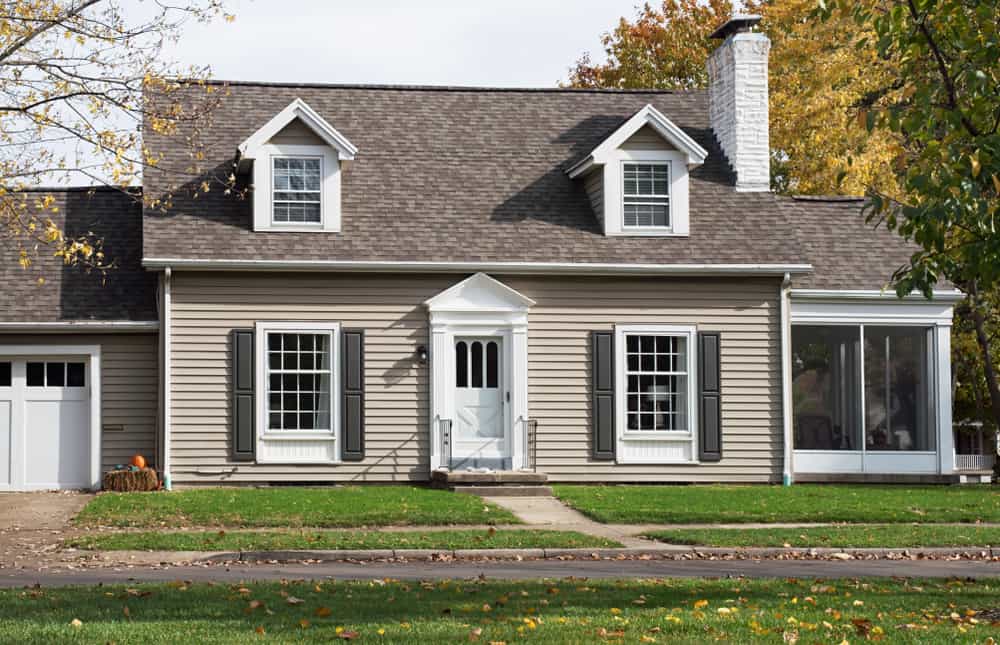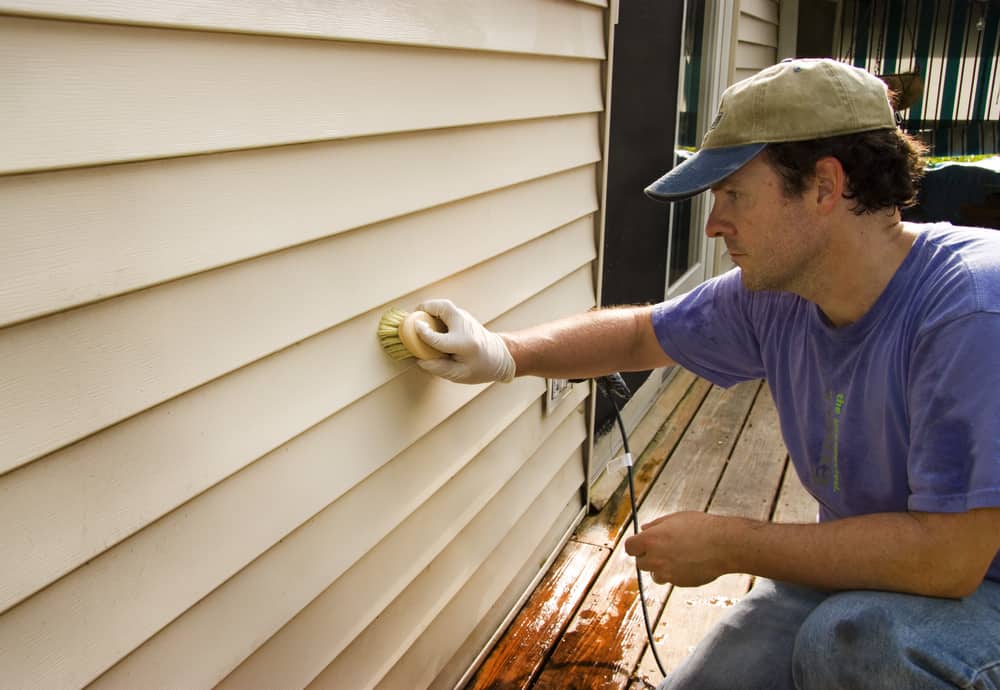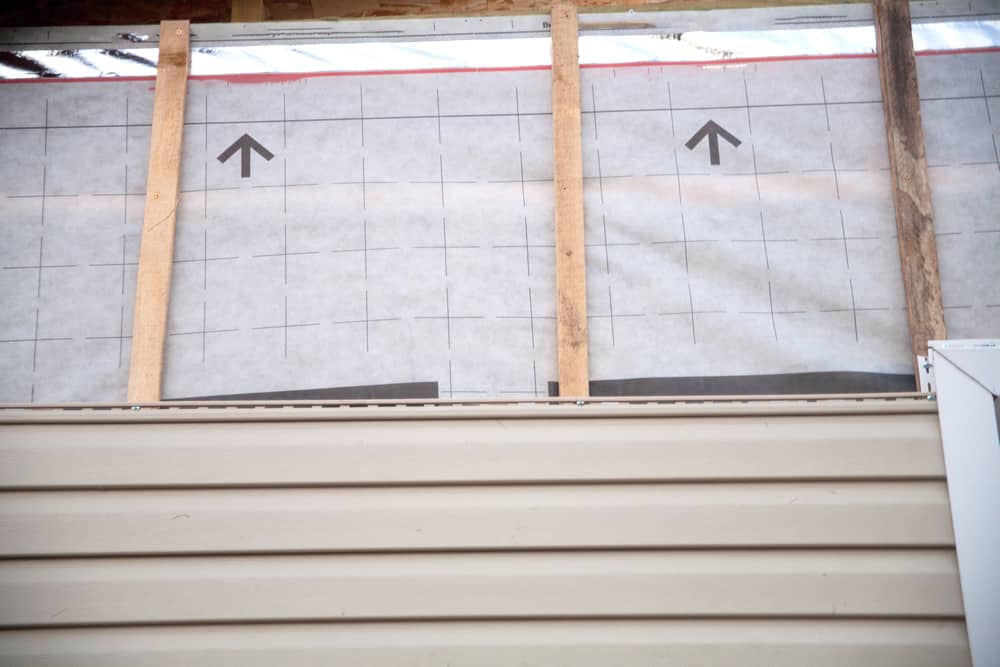Affordability, easy installation, and appealing to the eyes are a few crucial features that make vinyl sidings one of the most desirable materials for your home exterior surfaces. Plus, vinyl siding is very durable and long-lasting.
You can’t effortlessly determine the precise number of years of how long does the vinyl siding last. Basically, it can withstand for years in the top condition when maintained correctly. Let’s see.
Table of Contents
Vinyl Siding
To get familiar with the vinyl siding, you should be aware of its specifications and origin. It is not a material found in nature, but it consists of polyvinyl chloride resin. It is mixed in the proportion of 80% PVC and the other 20% of ingredients in charge for durability, paint, and flexibility.
Two PVC layers make it solid and durable to extreme weather conditions and resistant to impact, pests, and mold. 10% of titanium gives extra strength to it and allows withstanding impacts.
Thanks to this material, there is no need to cut forests or use natural resources that are nonrenewable or slow renewable. Vinyl siding is a long-lasting and easy-to-maintain product that can be produced in factories. All those reasons have made it one of the most common selections in the US.
How Long Does The Vinyl Siding Last?
There have been many studies in the US concerning this material. The last survey from 2019 showed that vinyl siding is highly popular with many residents of the Mid-Atlantic area.
In most cases, it lasts approximately 20 to 40 years, depending on the region where you live and the way you maintain your facade. If you want your vinyl siding to last for decades, you should clean it regularly and remove dirt and mold between panels.
What Can Affect The Vinyl Longevity?
1. Quality
It is not the same when deciding what type of vinyl siding you have installed regarding its thickness or grade. The thicker the vinyl siding is, the better is its durability. The standard is not to be less thick than 0.035 inches (0.9 mm).
However, if you want a higher standard, a facade with a longer lifespan, and better protection, there is a wide range of choices for you regarding vinyl siding grading and thickness, such as:
- Economy vinyl siding is thick038 inches (0.96 mm)
- Builder grade siding is thick040 inches (1 mm)
- Average grade siding is thick044 inches (1.11 mm)
- Upgraded vinyl siding is thick046 inches (1.17 mm)
- Premium grade siding is thick048 inches (1.2 mm)
- Top of the line sliding is thick more than055 inches (1.4 mm)
2. Installation
Proper installation done by vinyl installation experts is the best choice you can make. They are skilled in using high-quality materials and the appropriate amount of corrosion-free nails. You can expect that such professionals prevent possible damage caused by water, mold, and cracks.
They also know how to maintain vinyl siding and even replace some parts to prolong their lifespan to more years. Plus, they can quickly spot the cracks, mold, and pests on the existing facade and deal with them. Only properly installed vinyl siding can last up to 40 years.
3. Maintaining
Uncomplicated vinyl siding cleaning is the primary reason why people decide to use this material instead of other types available on the market. You can do it yourself without any special equipment.
It will be enough to wash it once a year except in a case when you live in some highly dusty and polluted areas. In such a case, you will need to clean your vinyl siding two times a year.
- Simple cleaning
You need to use a clean cloth and soft bristle brush with a long handle to clean vinyl siding before washing it with cold water. The best advice is to start from the bottom to the top. Then, you should repeat the procedure from top to bottom.
If there are persistent spots or dirt on the surface from oil, lipstick, or crayons, you should use some of the cleaning products you already have in your home. The best options are Ajax, Bon Ami, or any other similar non-abrasive product.
- Water pressure washing
You can wash your vinyl siding with a pressure washer once a year when necessary. Be careful since pressure washing under an inadequate angle can lead to excessive water accumulation underneath the vinyl siding.
As a result, you will face problems with cracking, mold, and rotting. Therefore, a better option is to hire a professional to finish that job.
- Mold and mildew removing
In case of mold and mildew occurrence, you should use cleaners specific to moldy vinyl surfaces. Also, you can make a DIY cleaning solution of 30% of vinegar and 70 % of water. Be aware that abrasive detergents harm vinyl siding surfaces, so you should avoid them.
- Preventing decolorization
You should be aware that some chemicals you use in your yard can be harmful to the vinyl siding. If you spray pesticides over your plants near the house, you should cover the facade with some nylons or cloth cover. Otherwise, chemicals will lead to decolorization once they get in touch with vinyl.
It is the same situation if you do some construction nearby. If the paint stains your vinyl siding, it will be hard to clean it without ruining the original color. Simply said, protecting the vinyl siding is the best solution if you use any kind of chemicals in its proximity.
4. Insulation
There is a particular vinyl siding type that has insulation underneath the panels impregnated in one layer. Such a vinyl siding type is more resistant to impacts and other damages caused by force. The insulation underneath acts like support for vinyl siding and gives it extra strength and durability.
When you need extra insulation to save energy on cooling and heating your home, you can decide to implement vinyl siding with insulation. That way, you will save money on so many levels, including electrical bills, maintaining, and replacing and additionally prolong the vinyl siding life.
Be aware that the vinyl siding price is a bit higher when it comes to insulation. However, it will pay off in time through your budget and fewer worries during the lousy weather.
5. Weather conditions
You should always keep in mind that various weather conditions affect the vinyl siding differently. If your vinyl siding is often exposed to stormy weather, heavy rain, or too much sun, you can’t count on its longevity. On the other hand, your vinyl siding will stay intact if you live in a region with mild weather.
Luckily, vinyl siding panels are simple to replace when necessary. So, you can prolong their life with regular checks and proper replacing even though you live in an area with high UV radiation or thunderstorms.
The Signs for Replacing the Vinyl Sliding Panels
As I have already mentioned, an expert can help you maintain, replace, and discover any problems with your vinyl siding. However, I will give you a list of what you need to look for to prolong your facade life if you are more of a DIY person.
Rotting
The vinyl siding is not prone to rotting, but the wood planks that support the panels are. The water usually comes off the panels, but sometimes it can break through beneath and find a free space between wooden planks.
If that is the case, wood will quickly start rotting, and the vinyl siding construction won’t be as resilient as it should be. Luckily, siding panels are easy to pull apart, and you can effortlessly detect the rot problem. It is necessary to replace the rotten wood to prolong the life of your facade.
Warping and cracking
Nothing lasts forever, so you shouldn’t be annoyed when your vinyl siding starts warping or cracking. Accidents and stormy weather will lead to these damages over time. All you can do is find cracks and warp parts and replace damaged panels.
Buckling
Common causes of buckling are tightening nails too much, sun, and heat. All you need to do once you notice such a thing is to replace and tight the nails a bit less than previously. If the sun and heat cause the problem, there is nothing else to do except checking and replacing panels when necessary.
Holes
Pests and animals like birds, rats, mice, and insects, including termites and carpenter ants, can cause holes in vinyl siding. In that case, it is necessary to call the exterminator to deal with the problem before you mend the facade.
Otherwise, pests will continue to destroy the construction and cause more significant damage.
Summary
The study shows the optimal age of vinyl siding is about 20 years. It sounds too good to be the truth, but some more resilient and quality sorts of sidings can last to four decades.
Always ask a manufacturer about the kind of vinyl siding you are interested in and how to achieve its maximum life. In most cases, the secret is in quality material and regular maintenance.




Its great when you said that vinyl siding lasts between 20 and 40 years. I want to replace the siding in my room since there are some holes. I would need to talk to a professional to get a suitable vinyl siding for my room. Thanks for the article!
Thank you for explaining that you should replace your vinyl siding if you notice any warping and cracking. I’ve been wondering if it might be time for the siding on our home. I think I noticed this when checking it over the other day.